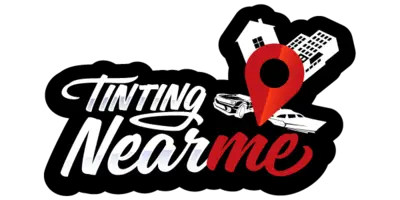2024 Indiana Legal Tint Laws Explained
Navigating new nuances in the 2024 Indiana legal tint laws can be tricky terrain. As you’re considering adding some shade to your sedan or SUV, it’s crucial to understand the changes put into effect. The Hoosier State has established specific regulations regarding the level of tint permitted on your vehicle windows, with penalties for non-compliance ranging from minor fines to hefty ones. But why such stringent standards, and how exactly are these levels measured? Let’s examine the details together and ensure you’re on the right side of the law.
The information on myeyerx.net isn’t legal advice; consider it a starting point. Always verify with local and state authorities, as the final decision rests with you. We are not lawyers. For specific legal guidance, we can refer you to legal experts. Remember, knowledge of both state and local laws is essential, and even law enforcement might not be fully updated. We aim for accuracy but advise double-checking for the latest regulations.
Key Takeaways
Key Takeaways
Key Takeaways
- Indiana has specific regulations regarding tint levels on vehicle windows, including different laws for sedans, SUVs, and vans.
- Violating tint laws can result in Class C and Class A infractions, with fines up to $500 and $10,000 respectively, as well as points on your license and higher insurance premiums.
- Tint regulations aim to protect law enforcement officers during traffic stops, ensure clear visibility for drivers, promote road safety, and maintain a level playing field for all drivers.
- Compliance with tint laws can be assessed using a tint meter to measure light transmission, with a requirement of allowing more than 30% of light in. Understanding procedures and regulations is important for safer driving conditions.
Need Help Getting a Medical Exemption?
Our Doctors Are Here For You!
MyEyeRx was established with the objective of simplifying the complex landscape of state regulations pertaining to legal tint medical exemptions for window tinting. For individuals seeking to navigate these regulations without resorting to a do-it-yourself approach, we offer a streamlined solution. Our team includes qualified medical professionals who are available to conduct consultations via Zoom. These sessions are designed to assess your eligibility for a medical exemption, ensuring a personalized and efficient process for acquiring the necessary documentation.
Understanding 2024 Indiana Tint Laws
If you’re planning to tint your vehicle’s windows in Indiana in 2024, it’s crucial to understand Indiana tint laws to avoid hefty penalties, which can range up to $10,000 for certain violations. The Indiana window tint laws differ for sedans, SUVs, and vans, and understanding the 2024 Indiana tint laws is essential for law-abiding citizens.
The Indiana Law states that windshield tint must be non-reflective and is allowed above the manufacturer’s AS-1 line or down to 5 inches below the top of the windshield. This means you can’t have tint on the windshield beyond these specifications. If you’re uncertain about these specifications, it’s always a good idea to seek legal advice.
For sedans, the laws in Indiana stipulate that the front side windows, back side windows, and the rear window tint must allow more than 30% of light in. This means the tint percentage can’t be too dark. However, SUVs and vans have no such restrictions for the darkness of window tint in the state of Indiana.
Violating these laws can result in Class C or Class A infractions with penalties of up to $500 or $10,000 respectively. So, it’s wise to be informed and abide by the rules.
If you have a medical condition that requires darker window tinting, you can apply for a tint exemption in Indiana. This waiver allows you to have darker tints than what is ordinarily permitted under Indiana Law. However, even with this waiver, you must adhere to the laws regarding tint on the windshield.
Legal Consequences of Violations
In the wake of violating Indiana’s window tint laws, you’re not just looking at hefty fines, but also other legal consequences that can impact your driving record and insurance rates. It’s crucial to understand these implications to safeguard your rights and maintain your driving privileges.
If your window is tinted too dark, exceeding the percentage of a window that’s allowed by the 2024 Indiana legal tint laws explained by the state, you’re breaking the law. The Indiana State Police are vigilant about this illegal practice in the state. A traffic stop for this reason can lead to a Class C infraction, with fines up to $500. In extreme cases, you may face a Class A infraction, resulting in fines as high as $10,000.
Moreover, these violations can cause you to be targeted more often for traffic stops, leading to additional fines and even points on your license. These penalties can significantly increase your insurance premiums. Furthermore, the process of removing the illegal tint can potentially damage your vehicle’s windows, leading to additional costs.
Keep in mind that some exceptions are made for medical conditions. However, these require formal documentation and must be approved by the state. Without these, you’re subjecting yourself to the legal consequences of violations.
To navigate this complex area, consulting with a legal professional is advisable. They can provide a detailed understanding, ensuring that your rights are reserved and you’re within the legal framework. Remember, knowledge and compliance are your best defenses against these potential consequences.
Reasons Behind Tint Regulations
Understanding the reasons behind Indiana’s window tint regulations is essential for every driver. The state has set these rules to ensure safety and fairness on the roads. The laws are designed with a mix of considerations in mind, including the safety of law enforcement, visibility for drivers, and the overall driving experience.
Here are a few reasons why Indiana has these regulations:
- They protect law enforcement officers during traffic stops. Tinted windows, especially dark tint, can make it difficult for officers to see inside the vehicle, which can be a safety issue.
- The regulations ensure that you, as a driver, can see clearly during various conditions. Whether it’s night driving, a rainstorm, or fog, your visibility should not be compromised.
- Indiana wants to make sure other drivers can anticipate your driving intentions. If your windows are heavily tinted, it could be hard for others to see your face and predict your moves.
- The state’s goal is to reduce accidents by promoting road safety. By limiting the tint on your front and side windows to a visible light transmission of 30% and 63% respectively, Indiana aims to keep the roads safe for everyone.
- Finally, compliance with the state regulations ensures a level playing field for all drivers. It’s not fair for some to have an advantage or disadvantage due to their window tint.
Window Tint Test Procedures
To ensure you’re abiding by Indiana’s tint laws, it’s crucial to familiarize yourself with the test procedures used by law enforcement to measure window tint compliance. The window tint test procedures involve measuring how much light passes through your vehicle’s windows. The drivers side front, front passenger side, and rear windows are all checked for light transmission.
ISP policy mandates that an officer uses a tint meter to measure the amount of light that passes through the window. The window is considered compliant if it allows more than 30% of light in. This is because, according to the 2024 Indiana legal tint laws explained, windows can be tinted but must allow a certain amount of light to pass through for safety reasons.
The front side windows, for example, must allow more than 30% of light in for sedans. SUVs and vans, however, have no restrictions on the darkness of the window tint, allowing for a darker window if desired. Similarly, the rear windows for sedans should also allow more than 30% of light in. Again, SUVs and vans have no restrictions, permitting a greater degree of light reduction.
Bear in mind that the police can enforce the removal of any mirror effect tint, as it is considered non-compliant. Therefore, understanding these procedures and regulations will ensure that your vehicle’s tint is within the legal bounds, promoting safer driving conditions for everyone on the road.
Navigating the Legal Landscape
Navigating Indiana’s legal landscape for window tinting requires awareness of specific state laws, such as allowing window tint above the AS-1 line on the windshield and needing more than 30% light allowance for sedans’ front side, back side, and rear windows. By 2024, Indiana legal tint laws explained that these rules are intended to ensure safety for drivers and allow the public to be able to see inside vehicles.
When choosing to have your windows tinted, consider these key points:
- The manufacturer already applies some tint to your vehicle’s windows. Therefore, additional tinting must comply with state laws.
- Tinted windows without proper light allowance can result in penalties.
- Ensure that the tint does not extend below the AS-1 line marked on the top of the windshield.
- For sedans, the front drivers’ side window and the back side windows must allow more than 30% of light in.
- While SUVs have fewer restrictions, you must still adhere to Indiana’s tint laws.
Understanding these rules helps you navigate the legal landscape with ease. Remember, Indiana State Police patrol cars have no tinted windows, and officers are equipped with technology to detect tint percentage. Non-compliance can lead to fines and potential legal issues.
Window tinting can offer benefits like UV protection, heat reduction, and privacy. However, it’s crucial to balance these advantages with Indiana’s specific laws and regulations. By doing so, you’ll enjoy the benefits of tinted windows while also staying safely within the bounds of the law.

Don't want the hassle? Let us take care of your exemption for you!
MyEyeRx.net is here to help you streamlines the process of obtaining a medical exemption for window tint online. Explore our services to easily transform your window tint from non-compliant to legally approved!
Because of the differences in each of the 50 states, we’ve crafted distinct guides for securing window tint medical exemptions for each of the individual states.

Toriano (Tory) Dewberry
Become one of the many satisfied clients Toriano has assisted in obtaining a medical exemption without stepping out of their homes. Click the button below to begin and discover if you're eligible for a medical exemption.

Toriano (Tory) Dewberry
Become one of the many satisfied clients Toriano has assisted in obtaining a medical exemption without stepping out of their homes. Click the button below to begin and discover if you're eligible for a medical exemption.
Frequently Asked Questions (FAQ'S)
What Is the Darkest Tint Allowed in Indiana?
In Indiana, you’re allowed a tint level of 30% VLT on your front side windows. This tinting not only enhances your car’s aesthetics but also offers UV protection and glare reduction. It’s recommended to have your tint professionally installed and regularly maintained. Window tint brands vary, so consider your tinting options carefully. Remember, safety concerns are paramount, as darker tints can reduce visibility. So, ensure your tint level is measured accurately to abide by Indiana’s laws.
How Do I Get a Tint Exemption in Indiana?
To get a tint exemption in Indiana, you’ll need to prove a medical necessity such as eye sensitivity or skin conditions. Gather documentation from your doctor and submit it during the application process. Remember, not all tinting companies are familiar with exemption requirements. Watch out for legal repercussions if you’re not compliant. Exemption duration varies, so you’ll need to renew it periodically. Always consult a legal expert if you’re unsure.
What Is the Darkest Legal Tint?
In Indiana, the darkest legal tint varies based on vehicle type. For SUVs and vans, any darkness is allowed on back side windows. Sedans must allow more than 30% light in for front and rear windows. Front side windows on SUVs can have up to 30% tint. It’s crucial to follow these laws to avoid hefty fines. Tint benefits include glare reduction and enhanced privacy, but always consider professional installation for optimal tint durability.
How Much Is a Tint Ticket in Indiana?
If you’re caught with illegal tint in Indiana, you’re looking at a fine that can reach up to $500. The cost may increase due to factors like court costs and repeat offenses. You can pay your ticket through various methods, but it’s wise to avoid these fines by adhering to the legal tint laws. Disputing the ticket could lead to a traffic court hearing, and repeat offenses may impact your insurance rates.

MyeyeRx.net
Ensuring your tint is not just about style, but legality and safety.
Let us guide you through the maze of state regulations to legal clarity.

Conclusion
So, you’re navigating Indiana’s 2024 tint laws, huh? Don’t underestimate their complexity or the severe penalties for violations. Does your car’s window tint meet the standards? Or is it a $10,000 mistake waiting to happen? Stay informed, stay legal, and avoid the suspense of a costly citation. Remember, it’s your responsibility to ensure compliance. Indiana’s laws may seem strict, but they’re there for a reason. Don’t let ignorance darken your path.
Looking to find a Reputable Window Tint Company In Indiana?
Checkout Tintingnearme.com to Find A Local Tint Shop
After learning about window tint laws, the next step is to find a trusted local window tinting shop. Tinting Near Me offers a selection of reputable shops knowledgeable in both quality tinting and legal standards, including medical exemptions.
Choose a shop from their list for expert service that meets legal requirements and enhances your vehicle’s compliance and protection.


